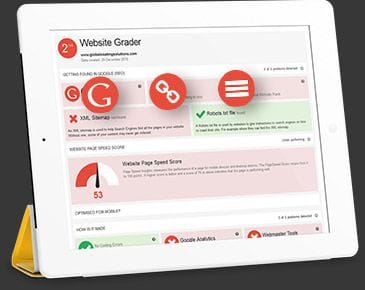Defining Your Target Audience in 5 Easy Steps
)
When it comes to capturing your target audience, it's interesting to note how some businesses capture more attention and interest than others.
These businesses manage to capture their target audience because they focus their energies into the niche of that audience. Rather than trying to capture everyone, they create a concrete image of who their customer is, which is then leveraged to engage and interact with that audience.
This strategy is effective regardless of whether you're selling a product or service, or whether you're B2B or B2C.
To help you get started, we've put together a handy 5-step guide to help you define your audience, leading to better online marketing and engagement.
Step 1: Examine Your Existing Customer Base
Dig into what you have to capture what you want. Your current customers are committed to your business for a reason, so starting with why they chose you is a great first step.
Why do they buy from you rather than your competition? What characteristics do your customers have in common? Finding the similarities between their needs and product (or service) interests can help you define their personality types, requirements, and help you design a more concise offering.
Take an especially close look at those customers that bring in the most business. What feedback have you received from them? That's a great testimonial and point of difference you can showcase to new potential customers.
Step 2: Check Your Competition
Unless you're one of the few lucky businesses in a low competition market, you're going to be vying for the same customers and online marketing space as other competitors in your industry. So how you set yourself apart is dependent on how much you know about what sets them apart from you. How are they marketing their products or services? How are they speaking to their audience?
We're not suggesting you start a smear campaign (like Pepsi vs. Coca Cola). What we can suggest is identifying which niches they're overlooking, or where you're different to really accentuate why you're different and thereby capture this new niche customer.
Step 3: Choose Your Demographics
Now that you've analyzed the competition and drawn a rough map of interests from existing customers, it's time to define your demographics. Rather than focusing solely on who you want to target, focus on who is most likely to engage with your brand and buy. That's where your existing customer base research comes in handy.
Think about factors like:
- Location
- Age & Gender
- Income & Education
- Occupation
Defining your demographics is like creating the bare bones scaffolding for a great marketing plan. You can't advertise or reach who you can't tangibly define.
Step 4: Consider Their Psychology
Now that we have the scaffolding, it's time to put some defining features on it. We know where your ideal customers are located, how old they are, and what their typical education and income is. But what do they like to do and how does their every day life fit into your offering?
Consider asking yourself questions like:
- What are their hobbies & interests?
- What is their personality & attitude like?
- What values do they hold?
- What is their lifestyle like?
The psychology behind your target market is a huge deciding factor on how they view and fit your brand into their lives. Understanding their makeup is key to developing and maintaining a marketing strategy that speaks to them directly in their own language.
Step 5: Analyze Your Product or Service
Now that we know who we're trying to reach and how they behave, it's time to fit your product or service into their lives. The best way to start is to create a list of features of each product or service with the attached benefits of each feature.
If you're selling heavy duty saltwater fishing gear for example and know your ideal customer likes to go fishing in the Florida Keys for that big catch, the features of your new rod and reel combo could be 30 lbs of drag and a 700 lb capacity to capture those beautiful swordfish or dorado. The benefit of the high capacity is the ability to capture bigger fish for those coveted bragging rights.
Having a well drawn out list of your products features and benefits creates an easily accessible starting point for any marketing efforts.
By defining your market niches and customers, you can create compelling copy on your website, create a cohesive social media marketing plan, and develop strategies to market to and capture your ideal customers. Leveraging your existing client base and knowledge of your competitors, you can design the rough scaffolding of your potential customers, describe their personalities for a more robust overview, and define your product's features and benefits to develop your online marketing in their language.
Bloomtools Canada has years of experience in the digital marketing field across multiple disciplines and industries. Leveraging our expertise, apply our audience defined marketing strategy to your web presence to increase leads and conversions. Contact us today to learn how we can help your business bloom!
) Author:Boaz Willinger
Author:Boaz Willinger| Tags:Online MarketingCustomer EngagementWebsite Performance |




)
)
)
